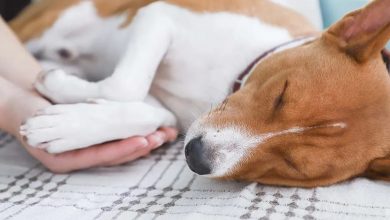How to Care for Your Dog After a Paw Pad Injury: Tips for Keeping Your Furry Friend Comfortable and Healing Quickly

1. Introduction
Dogs are active and curious animals that can sometimes get themselves into trouble. One of the more common mishaps is a cut paw pad. It’s not uncommon for dogs to cut their paws on sticks, rocks, or other sharp objects while running around outside. Fortunately, most cuts on a dog’s paw pad are minor and can be treated at home. Here’s what to do if your dog cut his paw pad.
2. Assess the Injury
The first step is to assess the injury. Check the area around the wound for any dirt or debris that may have been pushed into it, as this could lead to infection if left untreated. If there is any dirt or debris present, use tweezers to gently remove it before cleaning the wound further.
3. Clean the Wound
Once you have assessed the injury and removed any debris, it’s time to clean the wound with an antiseptic solution such as hydrogen peroxide or Betadine (diluted according to package instructions). Use a cotton swab dipped in the solution and gently dab at the wound until it is clean and free of dirt and debris. Do not scrub or rub at the wound as this could cause further damage and irritation.
4. Apply Pressure to Stop Bleeding
If your dog’s paw pad is still bleeding after cleaning, apply pressure with a clean cloth or gauze until it stops completely (this could take several minutes). Once bleeding has stopped, cover the wound with a sterile bandage or gauze wrap to keep it clean and protected from further irritation or infection.
5. Bandage The Paw Pad
When bandaging your dog’s paw pad make sure that you use a non-sticky material such as gauze wrap or an adhesive bandage specifically designed for pets (human bandages may be too tight). Wrap the bandage loosely enough so that there is no constriction of blood flow but tight enough so that it stays in place without slipping off easily when your pet moves around. Make sure you leave some room between each wrap so that air can circulate freely around the wound area (this will help with healing). Securely fasten each wrap with medical tape before covering them with an additional layer of gauze wrap for extra protection against dirt and debris entering into the wound site again during playtime activities outdoors.
6. Watch for Signs of Infection
It’s important to keep an eye on your pet’s injury over time for signs of infection such as swelling, redness, heat emanating from the area, pus discharge from the wound site, excessive licking/biting at woundsite etc.. If any of these symptoms occur then you should contact your veterinarian immediately for treatment advice/options available in order to prevent further complications associated with infections arising from open wounds due to cuts/scrapes etc..
7. Visit a Veterinarian if Necessary
In some cases where cuts are deep or severe enough then it may be necessary to visit your veterinarian in order for them to assess/evaluate/treat any underlying issues associated with these types of injuries which may include infection risks due to foreign bodies entering into wounds etc… Your vet will also be able provide advice on how best manage any pain associated with these types of injuries as well as providing additional information on how best care for wounds in order ensure they heal properly over time without causing further complications later down line due inadequate care initially given by owners etc..
8 Prevent Future Injuries
It’s important understand why these types of injuries occur in order avoid similar scenarios occurring again in future by taking necessary steps reduce risk factors associated with them in first place eg: keeping nails trimmed regularly avoiding walking dogs areas where there are lot sharp objects present like sticks/rocks etc… Additionally providing adequate supervision when playing outdoors reducing chances getting injured through rough play activities involving other animals etc…
9 Conclusion
> Most cuts on a dog’s paw pad are minor and can be treated at home but if they become infected then veterinary intervention may be required immediately in order prevent further complications arising from untreated infections caused by cuts/scrapes etc… By following above steps owners can rest assured knowing they have taken all necessary precautions ensure their beloved pet heals quickly without experiencing any pain discomfort during recovery process thus allowing them enjoy life back full health again soon possible!



